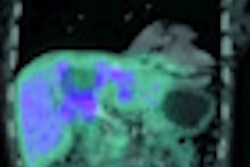Men in Texas may be driving more than three times farther than necessary to receive intensity-modulated radiotherapy (IMRT) for prostate cancer if they are being treated at a urology practice that owns its own IMRT equipment, researchers reported on Wednesday in the International Journal of Radiation Oncology, Biology, Physics.
The new study, conducted by a group from MD Anderson Cancer Center and Baylor College of Medicine, evaluated the location of radiation oncology treatment facilities owned by urology practices compared to other cancer treatment centers. The lead author of the study was Dr. Pavan Jhaveri, a radiation oncology resident at Baylor.
Urologist ownership of treatment facilities has been escalating and is being investigated by the U.S. Government Accountability Office (GAO) because self-referral may represent a conflict of interest, the authors noted. They identified all licensed urologists (640) in Texas working at 229 urology practices. From this group, they identified 29 practices that had four or more physicians (Int J Radiat Oncol Biol Phys, Vol. 84:1, pp. 15-19).
Of the 29 practices, 12 operated a radiation therapy center. This represented 5.2% of all urology practices in the state and included 28% of the total number of licensed urologists. All of these "integrated" practices had multiple clinic locations, but only one of the locations offered radiation therapy.
The practices were predominantly located in urban areas, with 53% of the state population living within 10 miles. Because these practices were located in densely populated urban areas, they were also near other cancer treatment centers, many of which were hospital-affiliated.
Prostate cancer patients who were seeing urologists at practices that owned a freestanding treatment center were traveling a mean of almost 20 miles for treatment, instead of going to a closer facility located a mean of six miles away, Jhaveri and colleagues found. For a 44-fraction course of treatment, this equates to almost 1,500 extra miles of travel, an additional cost of $170 to $260 for gas and mileage, and an estimated 24.8 hours of additional travel time by car.
Studies should be conducted to determine how urologist-owned radiation oncology treatment centers affect prostate cancer care patterns, quality of treatment, and patient satisfaction, according to the authors.
In an accompanying editorial, Dr. Louis Potters, professor and chairman of the department of radiation medicine at North Shore-LIJ Health System, was less sanguine. With more than 19% of U.S. urology practices referring their prostate cancer patients for IMRT at their self-owned radiation oncology centers, there is a potential for excess resource utilization, he cautioned.
Both urology radiation oncology (URO) practices and hospital-based cancer treatment centers ostensibly offer multidisciplinary cancer care with physician experts and state-of-the-art equipment, Potters noted.
"The URO practice model attempt to hide behind the mantra of multidisciplinary care is hollow," he wrote. "With increased resource utilization and longer driving distances, it appears that the purpose for these arrangements is financially motivated."
In light of the proposed reimbursement cuts in 2013 for Medicare payments and to discourage such practices by UROs, one approach might be to create a bundled payment for low- and intermediate-risk prostate cancer, regardless of therapy, to eliminate financial bias, Potters suggested.



















